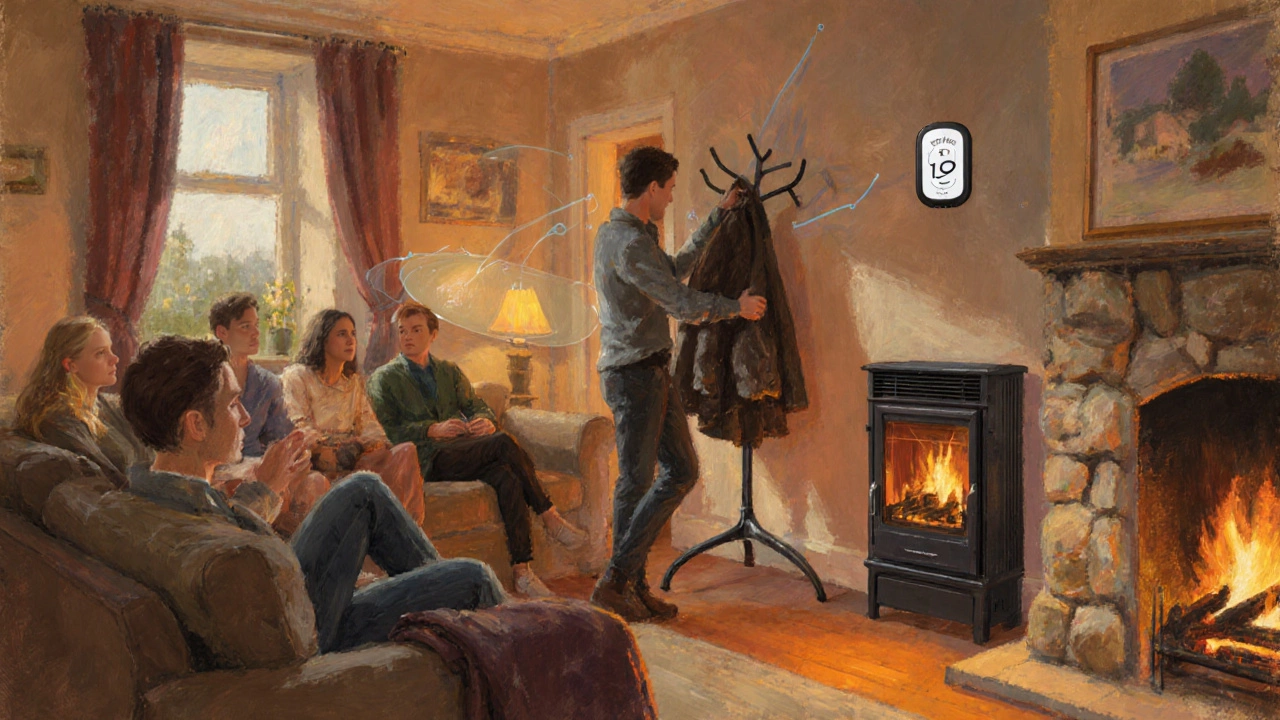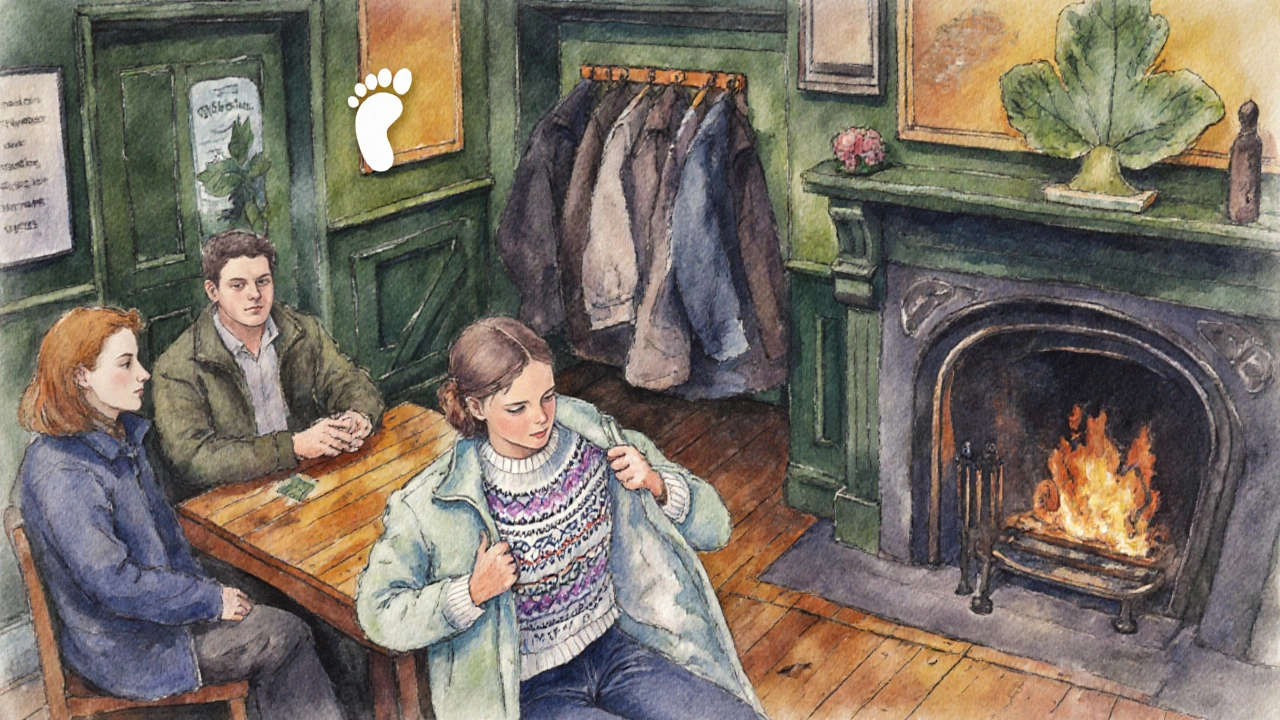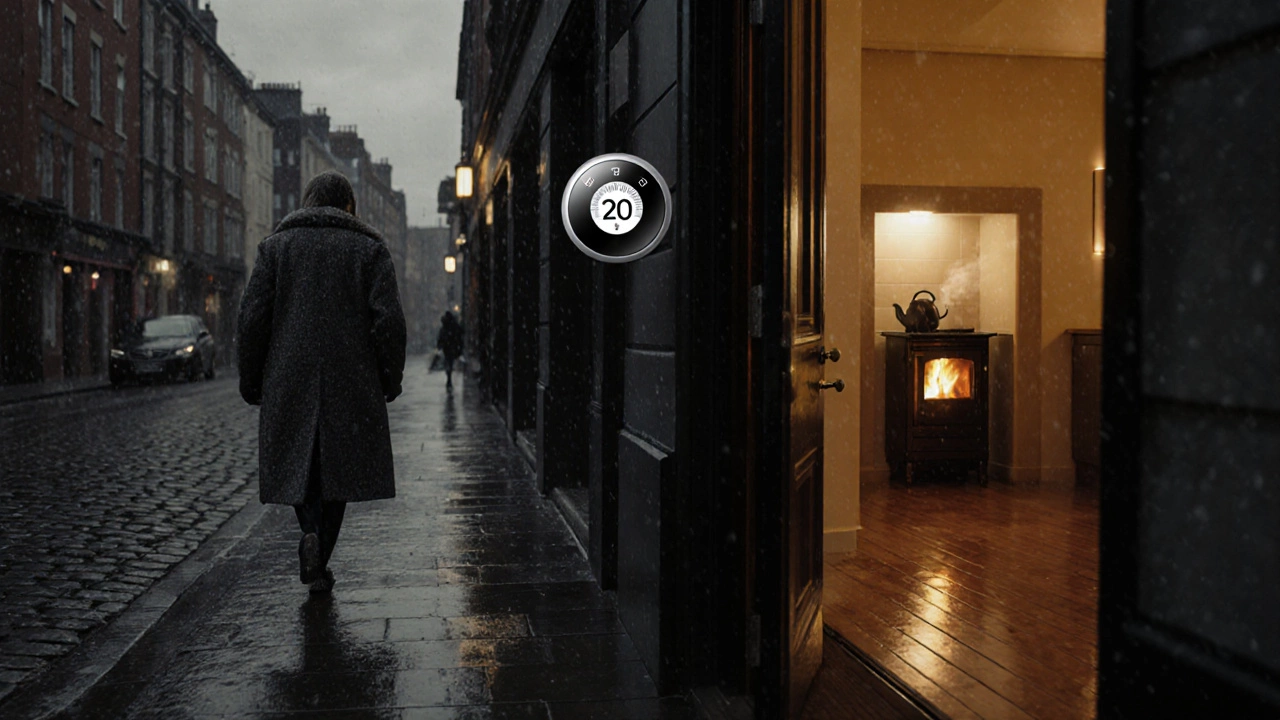Energy Savings Calculator
Calculate Your Annual Savings
Based on Irish heating data, removing your jacket indoors can save energy and money. Enter your annual heating cost to see how much you could save.
Living in Ireland means you’re used to a quick change of weather - a sunny morning in Dublin can turn into a drizzly afternoon in minutes. But once you’re inside, the thermostat often does the heavy lifting. If you find yourself still wearing a heavy coat while lounging in a heated kitchen or watching the match at a local pub, you might be missing out on comfort, savings, and even health benefits. Knowing when to take your jacket off inside isn’t just about fashion; it’s about Irish homes, energy costs, and the way we look after ourselves.
What a jacket is and why it stays on
A jacket is a garment designed to keep the body warm by trapping air close to the skin. In homes across the Republic, people often keep it on because the lingering chill of an Irish winter can feel relentless, even when the heating system is on. The habit is reinforced by cultural cues - a warm coat is a sign of readiness for unpredictable weather and a cosy, "homey" vibe in living rooms.
How indoor heating works in Irish homes
Most Irish households rely on a central heating system powered by natural gas, oil, or increasingly by heat pumps. The average indoor temperature in a living area hovers around 19‑21°C (66‑70°F). According to the Sustainable Energy Authority of Ireland (SEAI), heating accounts for roughly 60% of residential energy use. That means the system is already working to keep the space comfortable. When you keep a jacket on, you force the body to stay in a higher micro‑climate, causing the thermostat to work harder to maintain the set point.
Energy bills and the hidden cost of staying bundled up
A typical Irish two‑bedroom flat pays about €1,200 per year for heating. If you habitually wear a jacket indoors, your body produces less heat, prompting the boiler to fire up more often to reach the preset temperature. A 2023 SEAI study showed that a 1°C drop in thermostat setting can cut heating bills by up to 5%. By removing the jacket, you allow your body’s natural heat to contribute, potentially saving €60‑€80 a year per household.
Health impacts of overheating or staying too warm
Irish health guidelines warn against prolonged exposure to high indoor temperatures. Sweating in a jacket can lead to skin irritation, dehydration, and an increased heart rate. For older adults, especially in Dublin’s nursing homes, staying too warm raises the risk of heat‑related illnesses. Conversely, a moderate indoor environment (around 20°C) promotes better circulation, improves sleep quality, and reduces the likelihood of colds during the damp spring months.

Social etiquette: When does Irish hospitality meet jacket etiquette?
In many Irish homes, removing your coat at the door is a sign of respect. However, some pubs in Galway or Cork keep the doors open, and patrons often keep their jackets on to protect against drafts from the old stone walls. The rule of thumb: if you’re invited into someone’s living room for a cup of tea, gently place the jacket on a coat rack. If you’re in a bustling Dublin pub with a roaring fire, a light jacket is acceptable until the room feels warm.
Practical signs that it’s time to ditch the jacket
- After 10minutes, you notice a light sheen of sweat on your neck.
- The thermostat reads 19°C or higher and the room feels steady, not drafty.
- When you step outside for a short breath, you feel comfortably cool rather than chilled.
Use a simple “jacket rule”: if you can comfortably take a short walk from the kitchen to the sofa without shivering, leave the coat hanging.
Layering alternatives that keep you comfy without a full jacket
Instead of a heavy outerwear piece, try:
- A lightweight Irish‑woven sweater (Aran or Merino) that provides insulation without bulk.
- A breathable fleece that can be removed instantly if you feel warm.
- A smart thermostat adjusts heating based on room occupancy and temperature sensors that lowers the set point when you’re active, letting your body do the rest.

Environmental impact: Your jacket and Ireland’s carbon footprint
Every extra kilowatt‑hour of heating releases roughly 0.25kg of CO₂ in Ireland’s current energy mix. By reducing heating demand through natural body heat, you contribute to lower national emissions. The Climate Action Plan 2025 aims to cut residential heating emissions by 30% by 2030. Small habits like removing a jacket indoors add up when multiplied across thousands of homes.
Comparison of common indoor heating options in Ireland
| Option | Seasonal Efficiency (%) | Average Annual Cost (€) | Best For |
|---|---|---|---|
| Natural Gas Boiler | 85‑90 | ≈1,150 | Urban apartments, existing homes |
| Oil‑filled Boiler | 78‑83 | ≈1,300 | Rural houses without gas supply |
| Air‑source Heat Pump | 300‑400 (COP 3‑4) | ≈900 | New builds, eco‑focused households |
| Electric Radiators | 100 | ≈1,500 | Small rooms, supplemental heating |
Choosing a high‑efficiency system reduces the need for extra layers, making it easier to remove your jacket and still stay warm.
Key takeaways for Irish readers
- Indoor heating already provides enough warmth - keep the jacket off once the room reaches 19‑21°C.
- Removing the jacket saves up to €80 annually per household and cuts carbon emissions.
- Watch for sweat, steady thermostat readings, and personal comfort cues.
- Swap heavy coats for light Irish sweaters or smart thermostats for flexible comfort.
- Follow local etiquette: coat rack at the door in homes, relaxed jacket policy in pubs.
Frequently Asked Questions
Will removing my jacket make me catch a cold?
No. A well‑heated indoor environment (around 20°C) is safe. The risk of catching a cold comes from exposure to external drafts, not from being jacket‑free inside a warm room.
What temperature should I aim for before taking my jacket off?
Aim for 19‑21°C (66‑70°F). At this range, most people feel comfortable without an extra layer, especially if you’re moving around.
Are there health risks to staying too warm?
Yes. Overheating can cause sweating, dehydration, and in vulnerable groups, increase cardiovascular stress. Keeping indoor temps moderate and removing heavy coats helps maintain a healthy balance.
How much can I really save on my energy bill?
If you lower your thermostat by 1°C and rely on your body heat by removing jackets, you could save 5‑7% on heating costs, roughly €60‑€80 per year for an average Irish home.
Is it rude to take my coat off in someone’s home?
In Ireland, it’s customary to leave outerwear on a coat rack or designated hook. Taking it off is fine once you’re settled, as long as you’re not standing in a drafty spot.
